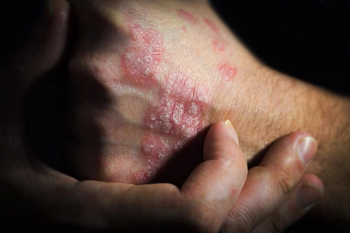
AML Risk Criteria May Not Fully Capture Prognosis in High-Risk MPN
Key Takeaways
- The ELN 2024 framework offers better stratification for AP/BP MPN, but gaps remain between intermediate and adverse groups.
- The study analyzed 211 patients, showing modest response rates and highlighting the need for disease-specific prognostic criteria.
Outcomes in accelerated-phase (AP) or blast-phase (BP) myeloproliferative neoplasm (MPN) differ from AML, and AML-based frameworks may not fully capture prognosis in this population.
Findings from a new analysis highlight both the promise and limitations of applying existing acute myeloid leukemia (AML) frameworks to a high-risk form of
This study, published in
Despite therapeutic advances, AP and BP MPN remain diseases with poor outcomes and few durable responses. The application of AML-based European Leukemia Net (ELN) models provides some prognostic value and has periodically (2017, 2022, 2024, and revised 2024) refined genetic risk classifications to better guide prognosis and therapy.
However, these models were developed largely in de novo AML patients treated with intensive chemotherapy, leaving uncertainty about their value in patients with AP or BP MPN treated with hypomethylating agents (HMA), venetoclax (Venclexta; AbbVie and Genentech)-based regimens, or targeted therapies.
This new study suggests that the
In this new study, researchers retrospectively analyzed 211 adult patients diagnosed with AP or BP MPN across 9 academic centers. Of these patients, 126 received next-generation sequencing at diagnosis and received less-intensive therapy as first-line treatment. Regimens included HMA monotherapy, HMA plus venetoclax (n = 55), HMA plus a JAK inhibitor, or targeted IDH1/2 inhibition. A subset (26%) ultimately proceeded to allogeneic hematopoietic cell transplantation.
Overall response rates were modest, with complete remission (CR) or CR with incomplete hematologic recovery (CRi) achieved in 30% of patients. Notably, differences emerged depending on which ELN model was applied. Under ELN 2017 and 2022, almost all patients were classified as intermediate or adverse risk, with virtually no “favorable” group.
The ELN 2024 model distributed patients more evenly, identifying 81 patients as favorable risk. Importantly, some of these patients achieved CR/CRi (28%), whereas none were classified as favorable responders under older frameworks. The refined ELN 2024 further expanded the intermediate-risk category, capturing 78 patients and showing 40% CR/CRi in its favorable group.
Median overall survival (OS) across the cohort was 11.5 months. By classification system, OS varied from 13.8 months to 45.4 months for patients considered favorable risk, from 6.4 months to 26.5 months for patients considered intermediate risk, and from 5.9 to 9.2 months for patients considered adverse risk.
Among the models, ELN 2024 criteria demonstrated the strongest predictive accuracy (C-index 0.60).
The cohort was predominantly male (61%) and had a median age of 71 years. Common antecedent treatments included hydroxyurea, JAK inhibitors, and interferon. Median time to progression from chronic phase to AP/BP was approximately 4.5 years.
As expected, the genetic landscape was dominated by canonical MPN drivers, including JAK2 (63%), CALR (17%), and MPL (8%) mutations. Other recurrent alterations included ASXL1 (33%), SRSF2 (27%), and TP53 (26%), all of which are associated with adverse risk.
In contrast, mutations linked with favorable AML outcomes, such as NPM1, were rare (0.7% vs 25.8% in de novo AML). This divergence, explained the researchers, underscores why outcomes in AP or BP MPN differ from AML and why AML-based frameworks may not fully capture prognosis in this population.
Multivariate analysis revealed that IDH2 mutations were associated with significantly improved OS (HR, 0.31, P = .004), despite no frontline use of IDH inhibitors in this cohort. Conversely, SRSF2, TP53, JAK2, DNMT3A, NRAS, CALR, and MPL mutations were linked to worse outcomes. Interestingly, the total number of mutations and triple-negative status did not significantly affect OS.
References
1. Shaw R, Yoon JJ, Johnston H, et al. Assessing AML-based risk criteria in patients with accelerated/blast-phase MPN treated with less-intensive therapy. Blood Adv. 2025;9(10):2453-2457. 10.1182/bloodadvances.202401571
2. Hoff FW, Blum WG, Welkie RL. Beat-AML 2024 ELN–refined risk stratification for older adults with newly diagnosed AML given lower-intensity therapy. Blood Adv. 2024;8(20):5297-5305. doi:10.1182/bloodadvances.2024013685
Newsletter
Stay ahead of policy, cost, and value—subscribe to AJMC for expert insights at the intersection of clinical care and health economics.












































